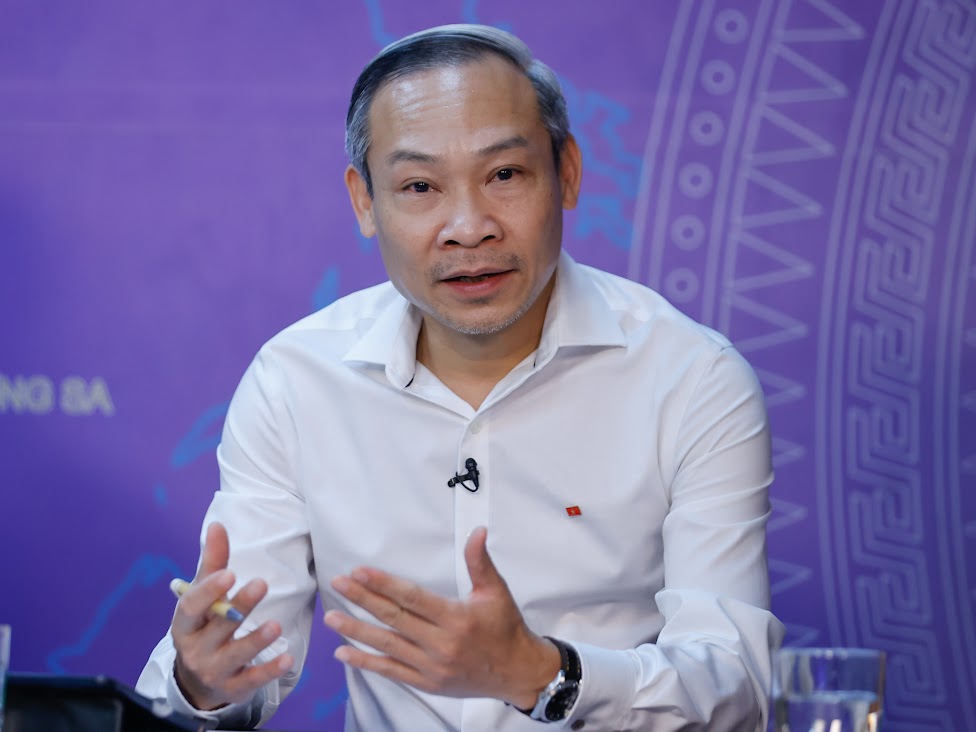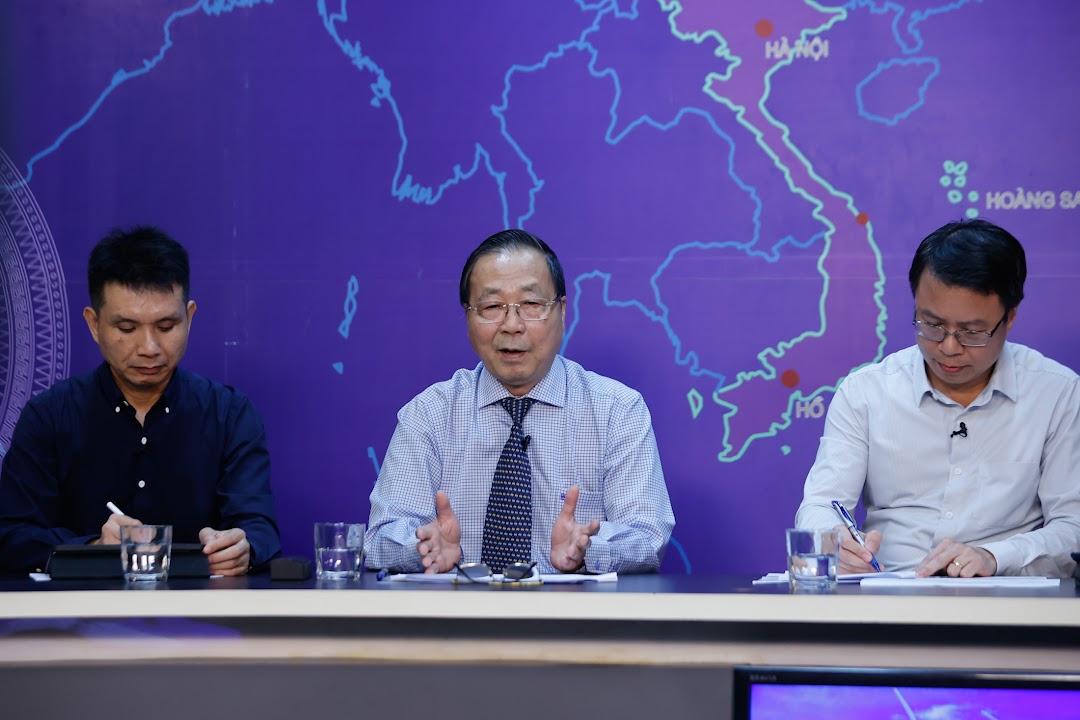Ensuring electricity supply in 2025

Member of the National Assembly Phan Duc Hieu. Source: VGP
From a macroeconomic perspective, a National Assembly’s member Phan Duc Hieu, a member of the National Assembly’s Economic and Financial Committee, argued that electricity is the prerequisite for activating production and consumption—the two main growth drivers of the economy. He also pointed out that, alongside requirements for output, the quality of power supply is increasingly prioritized, especially in high-tech and semiconductor industries, as well as in the context of Net Zero commitments.
Therefore, according to Hieu, the power sector must not only ensure sufficient electricity for all scenarios but also prepare a more appropriate price adjustment roadmap—ensuring accuracy, adequacy, and the ability to cover operating costs in a competitive electricity market.

Deputy Director General of the Electricity Agency Doan Ngoc Duong. Source: VGP
With specific data and operational scenarios, Deputy Director General of the Electricity Agency Doan Ngoc Duong said that, with a minimum economic growth target of 8%, electricity demand in 2025 is forecast to increase by more than 12%. Since late 2024, the Ministry of Industry and Trade has directed agencies and enterprises in the power sector to develop supply plans, reserves, and dispatch scenarios at various levels. Six key solution groups have been implemented in parallel.
First, power plants and transmission and distribution units must ensure maintenance and servicing schedules so that generating units and electrical equipment throughout the system are at peak readiness to meet electricity demand for the year.
Second, on the fuel supply side for power generation, power plants and key fuel suppliers—coal, oil, gas, etc.—must plan and maintain at least a minimum storage and reserves to cover peak demand periods.
Third, accelerate and strictly monitor the completion of several major power projects scheduled to come online this year, such as the Hoa Binh Hydropower Expansion, Nhon Trach 3 and 4 Thermal Power Plants, and the 500 kV Lao Cai–Vinh Yen transmission line.
Fourth, the National Power System and Electricity Market Operation Company must prepare and update operational scenarios and dispatch plans, ensuring the rational mobilization of different power sources to meet demand.
Fifth, enhance electricity conservation measures. This is vital because saving power directly reduces demand, especially during peak usage periods.
Finally, regulatory agencies must regularly inspect and supervise to ensure that all units, agencies, and organizations involved in every stage—from power generation and system dispatch to transmission and distribution—are at peak readiness, prepared to adapt to and respond to any possible situation.
Electricity prices do not reflect actual production costs
Experts warn that technical and operational measures alone are not enough. If the biggest bottleneck - the electricity pricing mechanism - is not resolved, the power sector will struggle to sustainably balance supply and demand in the medium and long term.
Mr Nguyen Tien Thoa, former Director General of the Price Management Agency at the Ministry of Finance, highlighted major shortcomings in electricity pricing. In particular, electricity prices still do not reflect actual production costs, making it difficult to attract investment into the energy sector. Current prices continue to shoulder too many objectives—stabilizing the macroeconomy, ensuring social welfare, and curbing inflation. However, according to economic experts, assigning so many non-market functions to the pricing mechanism is undermining investment signals and causing the private sector to hesitate when considering participation in power projects.

Former Director General of the Price Management Agency Nguyen Tien Thoa (center). Source: VGP
Notably, in addition to the issue of not fully accounting for all input costs, the cross-subsidy mechanism between residential and industrial user groups—and between different regions—has persisted for many years. Buying electricity at high prices but selling it below cost has led to prolonged losses in the power sector, affecting cash flow and reinvestment capacity. This is a major cause of potential power shortages in the medium and long term if not corrected soon via a transparent electricity-pricing roadmap that accurately reflects costs.
Energy expert Ha Dang Son, Director of the Center for Energy and Green Growth Studies, warned that keeping prices below actual costs poses significant risks to long-term energy security. He said that to ensure investment capital flows into the power sector, the prerequisite is a transparent, forecastable market operating on a reasonable and stable pricing mechanism.
Drawing on experiences from countries like Thailand and Singapore, Son noted that shifting to market-based, time-of-use pricing has clearly motivated investment. Conversely, if administratively low prices are maintained, the system will face degraded service quality, reduced investment appeal, and long-term imbalances.
He also points to the lesson from the Iberian Peninsula blackout: despite a modern grid, inadequate research on integrating renewables and a lack of contingency planning led to collapse. Thus, Vietnam needs to pursue its energy transition cautiously, grounded in science, with clear scenarios and proper investment in dispatch, transmission, and reserves.
Son added that Vietnam’s electricity prices remain much lower than those in neighboring markets such as Thailand, Indonesia, and the Philippines. While this may offer short-term benefits, it poses a major barrier to long-term development by failing to attract new investment and ensure a stable power supply. A fundamental solution to reassure investors is a reasonable, transparent, market-aligned price adjustment roadmap that fully covers all cost components. Balancing market pricing and social stability is a challenging but necessary task.
From the business perspective, Nguyen Van Dat, Deputy Director of the Thai Nguyen Electrolytic Zinc Plant (VIMIKO), shared that the company doesn’t demand low prices so much as it needs a stable, high-quality power supply and clear mechanisms for production planning. He noted that in recent years, the power sector has worked hard to maintain supply, and businesses appreciate its information-sharing and transparency.
Dat also reported that his company has proactively conducted energy audits, upgraded production lines, adopted energy-saving technologies, and invested in rooftop solar to reduce pressure on the grid, aiming for the government’s Net Zero by 2050 target.
Translator: Vân Ly
Share